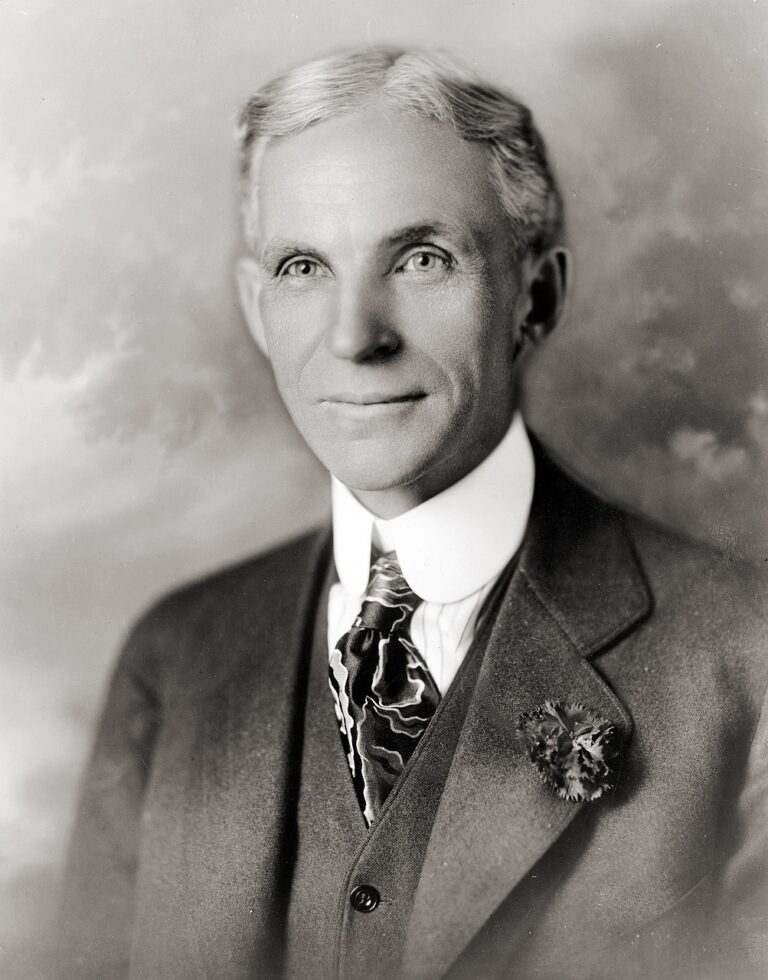Leadership Lessons from Amazon: Navigating the Jungle of Success

Unveiling the Amazon Journey: An Introduction to Leadership Lessons
In the ever-changing landscape of global commerce, few companies have displayed the resilience, innovation, and sheer impact of Amazon. Founded in 1994, Amazon has grown from a humble online bookstore into an e-commerce colossus, disrupting multiple industries and revolutionizing the way business is done. This transformation is not by chance. At its heart is a distinctive leadership model that has been the driving force behind Amazon’s success. This article aims to delve into the dynamics of that leadership model, uncovering the principles and practices that propelled Amazon to its current stature.
Amazon’s journey, marked by calculated risks, strategic pivots, and relentless innovation, is a testament to the powerful role leadership plays in an organization’s growth. This journey, however, was not without challenges. Alongside the triumphs were hard lessons learned from various setbacks, each one contributing to the refinement of the Amazon leadership model. By exploring this journey, we can glean valuable insights into effective leadership, distilled from real-world experiences and challenges.
The story of Amazon’s success is inextricably linked to its founder, Jeff Bezos. His unique vision and unwavering commitment to long-term thinking have become the bedrock of Amazon’s culture. However, the leadership canvas at Amazon is not confined to a single individual. It extends to a broader ecosystem of leaders across the organization who embody and enact the principles laid down by Bezos.
In this article, we will explore the different aspects of leadership at Amazon. We will start from the early days, examining how Bezos’s initial vision and critical decision-making shaped the company’s trajectory. We will then delve into the core leadership principles that underpin Amazon’s culture and strategies, illustrating each principle with real-life examples from Amazon’s history.
We will further delve into specific elements of Amazon’s leadership approach, such as its unwavering customer obsession, the emphasis on long-term thinking, and the cultivation of a culture that encourages innovation and embraces failure. We will also examine Amazon’s unique strategies for building high-performance teams, fostering distributed leadership, and leveraging data and technology.
Throughout this exploration, we will highlight key leadership lessons, offering practical insights that can be applied beyond the context of Amazon. We will also discuss how Amazon’s leaders navigated various crises, revealing the strength and adaptability of their leadership model.
Finally, we will look ahead to the future, contemplating the legacy of Amazon’s leadership and its implications for future leaders. We will conclude with key takeaways that aspiring leaders can carry forward into their personal and professional journeys.
By dissecting Amazon’s leadership model, this article offers a unique perspective on the art and science of leadership. Whether you’re an aspiring leader, a seasoned executive, or simply someone intrigued by the inner workings of one of the world’s most successful companies, there are valuable lessons to be learned from Amazon’s remarkable journey.
The Genesis of Leadership: Jeff Bezos and the Birth of Amazon
The story of Amazon’s leadership begins with a man and a vision. In 1994, Jeff Bezos, then a vice president of a Wall Street firm, had a life-altering realization. He observed the rapid growth of the Internet and envisioned a new business model that could leverage this emerging technology. Bezos decided to leave his lucrative job and pursue this vision, a decision that would lay the foundation for Amazon and redefine the boundaries of entrepreneurial leadership.
Amazon’s Early Days and Bezos’s Vision
Amazon began in the modest confines of Bezos’s garage in Bellevue, Washington, as an online bookstore. This choice wasn’t arbitrary. Bezos strategically chose books for their universal demand and the vast number of titles available, characteristics that would showcase the advantages of an online store over traditional retail outlets. Yet, his vision transcended the realm of selling books. Bezos imagined a company that could sell everything, to everyone, everywhere, and he was willing to take the long route to achieve it.
Critical Decision-making in the Initial Phase
From the onset, Bezos faced decisions that would shape Amazon’s destiny. One of the earliest and most consequential was the focus on customer experience. Bezos believed that by prioritizing customer satisfaction over short-term profits, Amazon could earn customer loyalty, a strategic asset that would pay dividends in the long run.
This customer-centric philosophy led to choices that were unconventional for the time. For instance, Amazon allowed negative product reviews on its website, a decision that many traditional retailers found counterproductive. Yet, Bezos saw it as a way to earn customer trust by providing honest and transparent information, even if it meant losing a few sales in the short term.
Risk Taking and Innovation: Cornerstones of Amazon’s Growth
Embracing risk and innovation became the cornerstone of Amazon’s growth strategy. Bezos fostered a culture that encouraged experimentation and was unafraid of failure. This culture gave birth to groundbreaking services such as Amazon Prime and Amazon Web Services (AWS). Despite initial skepticism, these services would eventually redefine their respective markets and become pivotal to Amazon’s success.
Amazon Prime, for instance, was born out of a willingness to take a financial risk for the sake of enhancing customer experience. The idea of offering unlimited two-day shipping for a fixed annual fee was a gamble, as it was uncertain whether the increase in sales would offset the shipping costs. Yet, Bezos and his team took the risk, and Prime went on to become a major driver of customer loyalty and revenue for Amazon.
Similarly, AWS emerged from an internal need for scalable computing infrastructure. While it was a departure from Amazon’s e-commerce business, Bezos saw the potential to offer similar services to other companies. Today, AWS is a dominant player in the cloud services market, contributing significantly to Amazon’s profitability.
From its humble beginnings, Amazon’s growth story is a testament to the power of visionary leadership, strategic decision-making, and a culture of risk-taking and innovation. Bezos’s early decisions and the principles he embedded in Amazon’s DNA have been instrumental in the company’s meteoric rise. As we delve deeper into Amazon’s leadership principles and practices, these early choices will emerge as recurring themes, each one a thread in the fabric of Amazon’s success story.
The Evolution of Amazon’s Leadership Principles
A fundamental aspect of Amazon’s unique leadership model lies in its set of Leadership Principles. These 14 tenets, codified over time, serve as a guiding compass for decision-making at all levels of the company, from the C-suite to the fulfillment center floor. In this section, we will unpack these principles and illustrate their practical application within Amazon’s ecosystem.
Unpacking the 14 Leadership Principles
The first and arguably the most significant of Amazon’s Leadership Principles is “Customer Obsession.” This principle places the customer at the center of Amazon’s universe, driving every decision and strategy. It’s more than just a commitment to customer service; it’s about understanding customers deeply, anticipating their needs, and working relentlessly to invent on their behalf.
Following Customer Obsession, the principles are:
-
Ownership: Leaders at Amazon act on behalf of the entire company and think long-term, beyond their immediate team or role.
-
Invent and Simplify: Leaders strive for innovation and simplification, even if it means venturing into uncharted territory.
-
Are Right, A Lot: Leaders at Amazon are expected to have good judgment and make sound decisions most of the time.
-
Learn and Be Curious: Leaders maintain a thirst for knowledge and are always seeking to improve themselves, their team, and their services.
-
Hire and Develop the Best: Leaders recognize exceptional talent and prioritize their growth and development.
-
Insist on the Highest Standards: Leaders consistently elevate the bar, driving themselves and their teams to deliver high-quality products, services, and processes.
-
Think Big: Thinking small is a self-fulfilling prophecy. Leaders at Amazon envision and create the future, not merely react to it.
-
Bias for Action: In a fast-paced industry, speed matters. Leaders value calculated risk-taking.
-
Frugality: Constraints breed resourcefulness and self-sufficiency. At Amazon, more isn’t always better.
-
Earn Trust: Leaders are transparent, truthful, and self-critical, building trust through integrity and delivering on their promises.
-
Dive Deep: No task is beneath a leader. They operate at all levels, staying connected to the details.
-
Have Backbone; Disagree and Commit: Leaders respectfully challenge decisions, and once determined, they commit.
-
Deliver Results: Leaders focus on the key inputs and deliver them with the right quality and in a timely fashion.
Stories Illustrating the Application of Each Principle
Each of Amazon’s Leadership Principles has a wealth of stories illustrating their application. For instance, the principle of “Invent and Simplify” is reflected in the creation of Amazon Web Services. Initially, AWS was a solution to an internal problem: Amazon’s teams needed a more efficient way to use computing resources. However, Amazon’s leadership saw the broader potential and invented a new business model in the form of cloud computing, a service that was simpler and more scalable for companies.
Another example is the principle of “Think Big.” This can be seen in the launch of Amazon Prime. At the time, offering unlimited two-day shipping for a fixed annual fee seemed audacious. It was a significant financial risk that required a massive logistical effort. But Amazon’s leaders saw the long-term potential and went ahead with the idea, which has been a game-changer for Amazon, transforming customer expectations about online shopping.
The Role of These Principles in Shaping Amazon’s Culture
The Leadership Principles are not merely words on a wall at Amazon; they are deeply ingrained in the company’s culture. They influence everything from hiring to performance reviews to how meetings are conducted. Candidates are assessed based on their alignment with these principles during the hiring process. Employees are evaluated and promoted based on how well they demonstrate these principles in their work.
These principles also help in shaping the strategic direction of the company. They guide brainstorming sessions, business reviews, and even daily interactions within teams. By embedding these principles into their culture, Amazon ensures that their unique approach to leadership permeates every level of the organization.
For instance, the principle of “Dive Deep” encourages a detail-oriented culture at Amazon. Leaders are expected to be closely involved with their teams and the work being done, regardless of their position in the hierarchy. This principle has fostered an environment where leaders are aware of the intricate details of their operations, leading to better decision-making and problem-solving.
Similarly, the principle of “Have Backbone; Disagree and Commit” fosters a culture of healthy debate and fast decision-making at Amazon. Leaders are encouraged to voice their disagreements, fostering a diverse range of ideas and perspectives. However, once a decision is determined, they are expected to commit fully, ensuring that progress isn’t hampered by lingering disagreements.
Over the years, these principles have evolved with Amazon, capturing the lessons learned along the way. They reflect Amazon’s unique approach to leadership, where long-term thinking, customer obsession, innovation, and operational excellence are valued. By unpacking these principles and understanding their application, we can gain valuable insights into the leadership model that has powered Amazon’s success.
Customer Obsession: The Prime Directive
At the heart of Amazon’s leadership ethos is an unwavering commitment to the customer, aptly captured in its first leadership principle: Customer Obsession. This principle has been a driving force behind Amazon’s evolution, shaping its strategies, innovations, and culture. In this section, we delve into the philosophy and impact of customer obsession at Amazon.
The Philosophy Behind Customer Obsession
The concept of customer obsession goes beyond the traditional model of customer service. It’s not just about reacting to customer needs; it’s about understanding them so deeply that you can anticipate those needs and even invent new ways to fulfill them. It’s about starting with the customer and working backward, letting their needs drive your decisions and strategies.
For Jeff Bezos, customer obsession is a strategic choice. He believes that in the long term, companies that focus on customers will thrive, while those that focus on competitors will falter. This belief stems from the understanding that customer needs and desires are enduring, while competitors and market conditions can change rapidly.
Real-life Stories of Customer-Centric Leadership at Amazon
Amazon’s history is replete with examples of customer-centric leadership. A notable instance is the introduction of customer reviews, which was revolutionary at the time. Despite criticism and concerns that negative reviews might hurt sales, Bezos insisted on giving customers a platform to express their honest opinions about products. This decision was based on a deep understanding of the customer’s desire for reliable product information. Today, customer reviews are a standard feature across e-commerce platforms, demonstrating the far-reaching impact of this customer-centric decision.
Another example is the creation of Amazon Prime. The idea of offering unlimited two-day shipping for a fixed annual fee was born out of an understanding of the customer’s desire for fast, reliable delivery. Despite the financial risk, Amazon chose to prioritize the customer experience, a decision that has paid off handsomely with millions of loyal Prime members.
The Impact of Customer Obsession on Amazon’s Performance
Customer obsession has been instrumental in driving Amazon’s growth and success. It has led to innovations that have not only fulfilled customer needs but also redefined customer expectations, giving Amazon a competitive edge.
The impact of customer obsession is also evident in Amazon’s customer loyalty. By consistently prioritizing the customer experience, Amazon has earned a level of trust and loyalty that translates into repeat business and word-of-mouth referrals. This loyalty has been a key factor in Amazon’s resilience, enabling it to weather economic downturns and competitive challenges.
Moreover, customer obsession has fostered a culture of innovation at Amazon. The relentless pursuit of customer satisfaction has encouraged employees to invent and experiment, leading to groundbreaking services like Amazon Web Services, Kindle, and Alexa. These innovations have diversified Amazon’s business, fueling its growth and solidifying its position as a leader in multiple industries.
Customer obsession is more than a principle at Amazon; it’s a mindset that permeates every aspect of its business. It’s the prime directive that guides decision-making, inspires innovation, and shapes the culture. By understanding the philosophy and impact of customer obsession, leaders can gain valuable insights into Amazon’s success and apply these lessons in their own organizations.
The Power of Long-Term Thinking
Another cornerstone of Amazon’s leadership approach is its commitment to long-term thinking. This principle, encapsulated in the company’s “Ownership” principle, has guided Amazon’s strategic decisions, investment priorities, and risk tolerance, setting it apart from many of its contemporaries. In this section, we explore the rationale, application, and implications of this long-term perspective at Amazon.
The Rationale Behind Long-Term Thinking
The essence of Amazon’s long-term perspective is the belief that short-term pressures should not compromise long-term interests. This mindset stems from Jeff Bezos’s conviction that true innovation and substantial growth cannot be achieved within short-term cycles. Instead, they require the patience to endure initial periods of uncertainty, learning, and possibly even failure.
This long-term perspective also arises from a deep-seated customer obsession. Amazon recognizes that creating lasting value for customers often involves investments that may not pay off immediately but can significantly enhance the customer experience over time. By focusing on long-term customer value rather than short-term profits, Amazon aims to build a sustainable competitive advantage.
The Application of Long-Term Thinking in Amazon’s History
Amazon’s commitment to long-term thinking is reflected in many of its strategic decisions and initiatives. One of the earliest examples is the decision to allow negative product reviews on its platform. While this move risked deterring immediate sales, Bezos believed that it would enhance customer trust and loyalty over the long term.
The development of Amazon Web Services (AWS) is another powerful illustration of Amazon’s long-term perspective. Initially, AWS required significant upfront investment and ventured into a market unrelated to Amazon’s core e-commerce business. However, Bezos and his team saw the long-term potential of cloud services and were willing to endure short-term financial pressure. Today, AWS is a market leader in cloud computing, contributing significantly to Amazon’s revenues and profits.
Amazon’s approach to failure also embodies its long-term mindset. Rather than viewing failures as detrimental, Amazon sees them as valuable learning opportunities that inform future strategies and innovations. For example, while the Amazon Fire Phone was a commercial failure, lessons learned from that experience contributed to the successful development of other Amazon devices like the Echo and Alexa.
The Implications of Long-Term Thinking for Amazon’s Success
Amazon’s long-term perspective has played a critical role in its success. It has enabled the company to take calculated risks, make substantial investments in innovation, and weather periods of failure and uncertainty. It has also fostered a culture that values patience, persistence, and continuous learning, which are crucial for sustained innovation.
Moreover, long-term thinking has allowed Amazon to build lasting relationships with customers. By consistently prioritizing customer value over short-term profits, Amazon has earned customer trust and loyalty, which are key drivers of its long-term growth.
Finally, Amazon’s long-term perspective has delivered significant financial rewards. Many of its long-term investments, such as AWS and Prime, have become major revenue generators, underpinning Amazon’s financial success.
Long-term thinking is not merely a leadership principle at Amazon—it’s a strategic imperative that shapes the company’s decision-making, culture, and competitive strategy. By understanding and embracing this mindset, leaders can navigate short-term pressures more effectively and steer their organizations towards sustainable success.
Embracing Failure: A Catalyst for Innovation
One of the most distinctive aspects of Amazon’s leadership approach is its attitude towards failure. In Amazon’s high-velocity, innovative environment, failure is not only accepted but seen as an essential part of the journey towards success. This section delves into Amazon’s philosophy on failure, how it’s put into practice, and the benefits it has reaped from fostering a culture that embraces failure.
The Philosophy Behind Embracing Failure
At the core of Amazon’s philosophy on failure is the belief that it is an inevitable consequence of invention. Amazon sees invention and failure as two sides of the same coin, recognizing that not every experiment will be successful, but every failure provides valuable lessons that can drive future innovation.
This mindset is deeply ingrained in Amazon’s culture and is linked to its commitment to long-term thinking. Amazon is willing to endure failures in the short term if they provide insights that can lead to long-term success. This perspective frees its employees to take calculated risks and push boundaries, fostering a culture of bold innovation.
Real-life Stories of Failure and Lessons Learned at Amazon
Amazon’s history is dotted with failures, each one a stepping stone on the path to success. For instance, the Amazon Fire Phone, launched in 2014, was a commercial failure. However, rather than retreating from hardware development, Amazon learned from this setback and used these insights to create successful products like the Amazon Echo and Alexa.
Similarly, Amazon Auctions, an early attempt to compete with eBay, failed to gain traction. Yet, lessons from this failure helped Amazon develop Marketplace, which allows third-party sellers to sell on Amazon’s platform and has since become a major part of Amazon’s business.
The Impact of Embracing Failure on Amazon’s Performance and Culture
Amazon’s embrace of failure has had a profound impact on its performance and culture. By viewing failure as a learning opportunity, Amazon has been able to iterate and innovate rapidly, leading to groundbreaking products and services that have driven its growth.
This philosophy has also fostered a culture of boldness and resilience. Amazon employees know they can take risks without fear of retribution, which encourages them to think outside the box and challenge the status quo. This environment has allowed Amazon to stay on the cutting edge of innovation, maintain its competitive advantage, and attract top talent.
Moreover, by learning from its failures, Amazon has been able to make more informed decisions and avoid repeating mistakes, increasing its operational efficiency and effectiveness.
Amazon’s approach to failure offers valuable lessons for leaders. By embracing failure, Amazon has created a culture that fuels innovation, encourages learning, and fosters resilience, contributing significantly to its success. As Jeff Bezos once said, “If you’re not stubborn, you’ll give up on experiments too soon. And if you’re not flexible, you’ll pound your head against the wall and you won’t see a different solution to a problem you’re trying to solve.” Amazon’s willingness to be both stubborn on vision and flexible on details has been instrumental in its journey from an online bookstore to a global technology giant.
Building a High-Performance Team
For Amazon, creating a high-performance culture is not just about having visionary leadership or groundbreaking innovation. It’s also about building a team that can bring these elements to life. This section explores Amazon’s approach to hiring and developing talent, leadership development within the company, and its unique take on performance and accountability.
Hiring and Developing Talent at Amazon
Amazon’s hiring process is rigorous and focused on finding people who not only have the right skills but also align with its leadership principles. Interviews are structured around these principles, and candidates are assessed on their ability to exemplify them. This approach ensures that Amazon hires individuals who fit its culture and can contribute to its customer-obsessed, long-term focused, and failure-embracing ethos.
Once on board, employees are given opportunities to develop their skills and advance their careers. Amazon offers a wide range of training and development programs, including its peculiar “Peculiar Ways” program, which educates new hires about Amazon’s unique culture and leadership principles. It also offers the “Career Choice” program, which pre-pays 95% of tuition for employees to gain skills in high-demand fields.
Stories of Leadership Development Within the Company
Over the years, many leaders have grown within Amazon, demonstrating the effectiveness of its development approach. One notable example is Andy Jassy. He joined Amazon in 1997, right after his MBA, and initially served as a technical assistant to Bezos. In the early 2000s, he came up with the idea of selling Amazon’s computing infrastructure as a service, which led to the creation of Amazon Web Services. Jassy led AWS since its inception and became its CEO in 2016. Then, in 2021, he succeeded Bezos as Amazon’s CEO, marking a significant milestone in his leadership journey within the company.
Amazon’s Approach to Performance and Accountability
Amazon has a robust performance management system that holds employees accountable for their performance and alignment with the leadership principles. The company uses a rank-and-yank system, also known as the vitality curve, where employees are ranked, and the bottom performers are let go.
While this approach may seem harsh, it ensures a high-performance culture where mediocrity is not tolerated. It also reinforces the importance of the leadership principles, as employees’ adherence to these principles influences their performance ratings.
Furthermore, Amazon has mechanisms in place to ensure that leaders at all levels are held accountable for their actions and decisions. One such mechanism is the “Anytime Feedback Tool,” which allows employees to submit feedback about their peers or superiors anonymously.
Amazon’s approach to building a high-performance team is multifaceted, incorporating rigorous hiring practices, robust development programs, and a strong performance culture. This approach, anchored in Amazon’s unique leadership principles, ensures that the company has the talent and leadership it needs to sustain its success.
Distributed Leadership: Empowerment and Autonomy
At Amazon, leadership is not confined to the executive suite. It is distributed throughout the organization, reflecting the company’s commitment to empowerment and autonomy. In this section, we explore the concept of distributed leadership at Amazon, success stories that have resulted from employee empowerment, and the role of autonomy in driving Amazon’s success.
The Concept of Distributed Leadership at Amazon
Distributed leadership at Amazon stems from its leadership principle, “Ownership.” Amazon employees, or “Amazonians,” are encouraged to act like owners who think long-term, don’t sacrifice long-term value for short-term results, and act on behalf of the entire company. This principle empowers employees at all levels to take initiative, make decisions, and lead in their areas of responsibility.
This distributed leadership model is further reinforced by the “Two-Pizza Team” concept. The idea is that teams should be small enough to be fed by two pizzas, promoting agility, faster decision-making, and a sense of ownership. These small, autonomous teams operate like start-ups within the larger Amazon ecosystem, each with its own leaders who are empowered to make decisions that drive their team’s success.
Success Stories Stemming from Employee Empowerment
Amazon’s distributed leadership model has led to numerous success stories. One such story is the creation of Amazon Prime. The idea for Prime originated from a mid-level engineer who suggested the concept of a loyalty program offering fast, free shipping for an annual fee. Despite initial skepticism, the leadership decided to test the idea. Today, Amazon Prime is a cornerstone of Amazon’s business, with over 200 million members worldwide.
Another example is the development of Amazon Web Services (AWS). The concept for AWS emerged from a team that recognized the potential of selling Amazon’s computing infrastructure as a service. Empowered to take this idea forward, the team developed what would become the world’s leading cloud services platform, driving a significant portion of Amazon’s profits.
The Role of Autonomy in Driving Amazon’s Success
Autonomy is a critical component of Amazon’s distributed leadership model. By giving teams the autonomy to make decisions and take risks, Amazon fosters an entrepreneurial culture that fuels innovation.
Autonomy also plays a key role in Amazon’s ability to scale effectively. By delegating decision-making authority to its “Two-Pizza Teams,” Amazon reduces the bottlenecks that can slow down larger organizations. This allows Amazon to remain agile and responsive to customer needs, despite its size.
Moreover, autonomy enhances employee motivation and job satisfaction. When employees feel that they have a real impact on their work, they are more likely to feel committed to their roles and perform at their best. This has helped Amazon attract and retain top talent, contributing to its sustained success.
Amazon’s approach to distributed leadership offers valuable insights for other organizations. By empowering and granting autonomy to its employees, Amazon fosters a culture of ownership and innovation that drives its success. This approach, combined with its customer obsession, long-term thinking, and willingness to embrace failure, forms a unique leadership model that has enabled Amazon to transform from a small online bookstore into one of the world’s most influential companies.
The Role of Technology and Data in Leadership
In today’s digital age, data and technology play crucial roles in leadership. At Amazon, they are integral to the company’s decision-making processes and its ability to innovate and deliver value to customers. This section explores Amazon’s data-driven decision-making culture, the intersection of leadership and technology at the company, and case studies highlighting how Amazon uses data and technology to solve complex problems.
Amazon’s Data-Driven Decision-making Culture
Amazon’s culture places heavy emphasis on data-driven decision making. It believes that data, when properly analyzed and interpreted, can provide insights that help to eliminate bias, increase efficiency, and improve customer experience. As such, Amazonians are encouraged to base their decisions on data rather than intuition or anecdote. This approach ensures that choices made within the company are objective, customer-focused, and likely to drive the best results.
Amazon’s “Customer Obsession” leadership principle further underscores its data-driven culture. The company extensively uses data to understand customer behavior, preferences, and needs. These insights inform its product development, marketing, and service delivery strategies, enabling Amazon to deliver highly personalized and satisfying customer experiences.
The Intersection of Leadership and Technology at Amazon
At Amazon, leadership and technology go hand in hand. The company’s leaders are expected to be conversant with the latest technologies and understand how they can be used to drive value for customers. They are also expected to champion the use of technology within their teams to enhance productivity and innovation.
Moreover, technology plays a crucial role in facilitating Amazon’s distributed leadership model. Tools and platforms enable collaboration, communication, and decision-making across the company’s geographically dispersed teams. They also support the collection, analysis, and sharing of data, which are critical for Amazon’s data-driven decision-making culture.
Case Studies: Using Data and Technology to Solve Complex Problems
There are numerous examples of Amazon using data and technology to solve complex problems. One notable case is the development of Amazon’s recommendation engine. By analyzing vast amounts of customer data, Amazon has been able to create highly personalized product recommendations. This not only enhances the customer experience but also drives additional sales.
Similarly, Amazon uses technology and data to optimize its logistics and supply chain operations. For instance, Amazon’s warehouses use robots and sophisticated algorithms to store, locate, and retrieve items. This has significantly increased warehouse efficiency, reduced costs, and improved delivery times.
Another example is AWS, which leverages technology and data to provide a wide range of cloud-based services. These services allow businesses to scale and innovate more quickly, reducing their costs and increasing their agility.
At Amazon, data and technology are not mere tools; they are strategic assets that inform decision-making, drive innovation, and enhance customer value. By integrating data and technology into its leadership approach, Amazon has been able to stay ahead of the curve, adapt to changing market dynamics, and maintain its position as a global leader in the digital age.
Navigating Challenges: Leadership During Crisis
Even the most successful companies face crises, and how they respond can be a testament to their leadership. Amazon is no exception, having navigated numerous economic and social challenges throughout its history. This section examines Amazon’s response to these challenges, the role of leadership in managing crisis, and lessons that can be drawn from Amazon’s crisis management strategies.
Amazon’s Response to Economic and Social Challenges
Over the years, Amazon has faced various economic and social challenges, ranging from economic downturns to social issues like labor rights and environmental sustainability. However, the company’s leadership principles, particularly its commitment to long-term thinking and customer obsession, have guided its responses.
For instance, during the 2008 financial crisis, while many companies were downsizing, Amazon continued to invest in innovation and infrastructure. It made significant bets on Kindle and AWS, which later became key growth drivers for the company. This long-term thinking, despite short-term economic challenges, has been a defining characteristic of Amazon’s leadership approach.
More recently, during the COVID-19 pandemic, Amazon ramped up its operations to meet the surge in demand for online shopping, even as it worked to ensure the safety of its employees. The company invested heavily in safety measures, implemented flexible work policies, and even increased wages for warehouse and delivery personnel.
The Role of Leadership in Managing Crisis
During a crisis, effective leadership is crucial. At Amazon, the leadership principles serve as a compass, guiding the company’s actions and decisions. For example, during the COVID-19 pandemic, the principle of “Customer Obsession” led Amazon to prioritize meeting customer needs despite the operational challenges posed by the pandemic. Meanwhile, the principle of “Ownership” motivated Amazon’s leaders to take responsibility for employee safety and wellbeing.
Moreover, Amazon’s leaders are expected to exhibit the principle of “Earn Trust,” particularly during challenging times. This involves being transparent, treating others respectfully, and delivering on promises, all of which are crucial for maintaining stakeholder trust during a crisis.
Lessons from Amazon’s Crisis Management Strategies
Amazon’s approach to crisis management offers several lessons for other organizations. First, it underscores the importance of adhering to core values or principles, even during challenging times. These principles can provide guidance when difficult decisions must be made.
Second, it highlights the need for long-term thinking. While it’s necessary to address immediate challenges, leaders should also consider how their actions will impact their organization in the long run.
Finally, Amazon’s approach emphasizes the importance of trust and transparency in crisis management. Leaders need to communicate openly with stakeholders and take actions that build, rather than erode, trust.
Navigating crises effectively requires strong leadership, adherence to core principles, a long-term perspective, and a commitment to trust and transparency. Amazon’s approach to managing economic and social challenges exemplifies these attributes, contributing to its resilience and continued success amidst uncertainty.
Looking Forward: Amazon’s Leadership Legacy and the Future
Amazon’s leadership journey provides rich insights into how the company has redefined business practices and set new standards for the global marketplace. As we look forward, we’ll consider the impact of Amazon’s leadership on global business practices, speculate about the future of leadership at Amazon, and discuss key takeaways for aspiring leaders.
The Impact of Amazon’s Leadership on Global Business Practices
Amazon’s unique approach to leadership has had a profound impact on global business practices. Its customer obsession has redefined customer service standards, prompting businesses worldwide to put customers at the center of their operations. The company’s long-term thinking and willingness to tolerate failure have also encouraged other organizations to take calculated risks and invest in future-oriented initiatives.
Amazon’s data-driven culture and use of technology have demonstrated the potential of harnessing data and technology for strategic decision-making and innovation. Furthermore, its distributed leadership model and emphasis on empowerment and autonomy have shown how these elements can drive agility, innovation, and employee satisfaction.
The Future of Leadership at Amazon: Trends and Predictions
While it’s impossible to predict the future with certainty, we can anticipate that Amazon’s leadership approach will continue to evolve in response to changing market dynamics, customer needs, and societal expectations. Technology, data, and AI will likely play even larger roles in decision-making and innovation. Moreover, as societal expectations around issues like sustainability and social responsibility continue to rise, these factors may become more prominent in Amazon’s leadership approach.
At the same time, some elements are likely to remain constant. Amazon’s 16 leadership principles, particularly its commitment to customer obsession, long-term thinking, and willingness to accept failure, will likely continue to guide its actions and decisions. Moreover, its emphasis on hiring and developing leaders, fostering a high-performance culture, and distributing leadership throughout the organization will likely remain central to its leadership approach.
Key Takeaways for Aspiring Leaders
Aspiring leaders can learn much from Amazon’s leadership journey. First, the importance of having a clear, compelling vision cannot be overstated. Such a vision can serve as a guiding star, aligning and motivating the team to work towards a common goal.
Second, leaders need to be customer-focused. Regardless of the industry or business model, understanding and meeting customer needs are crucial for success.
Third, leaders should be willing to take calculated risks and learn from failure. This requires a culture that embraces failure as an opportunity for learning and innovation.
Fourth, data and technology are powerful tools for decision-making and innovation. Leaders need to understand these tools and harness them effectively.
Finally, effective leadership involves empowering others. By distributing leadership and fostering a sense of ownership, leaders can drive agility, innovation, and motivation within their teams.
Amazon’s leadership legacy provides valuable lessons for the future. Its unique approach to leadership, characterized by customer obsession, long-term thinking, a willingness to tolerate failure, a data-driven culture, and distributed leadership, offers a blueprint for success in the digital age. Aspiring leaders who learn from this legacy and adapt it to their unique contexts can enhance their ability to lead effectively and create value for their organizations.
Reimagining Leadership: Key Takeaways from Amazon’s Legacy
As we conclude our exploration of leadership lessons and stories from Amazon, it becomes evident that the company’s journey is a testament to the transformative power of visionary, customer-focused, and data-driven leadership. Amazon’s leadership model, with its unique blend of principles and practices, offers a wealth of insights for leaders aiming to drive innovation, agility, and sustainable success in today’s rapidly evolving business landscape.
The company’s relentless focus on customer obsession, a cornerstone of its leadership principles, has redefined customer experience standards and demonstrated how putting customers at the heart of operations can drive unparalleled growth and loyalty. Moreover, Amazon’s long-term thinking and willingness to tolerate failure have underscored the importance of these attributes in fostering a culture of innovation and resilience.
Amazon’s emphasis on hiring and developing leaders has shown how investing in talent can yield significant dividends. Its commitment to building a high-performance culture, underpinned by metrics and accountability, has highlighted the role of such a culture in driving excellence and operational efficiency.
The company’s distributed leadership model, characterized by empowerment and autonomy, offers valuable lessons on driving agility, innovation, and motivation in a large organization. Furthermore, Amazon’s strategic use of data and technology for decision-making and innovation demonstrates how these tools can be harnessed to create a competitive edge and deliver superior value to customers.
As Amazon navigates challenges and crises, it exemplifies the importance of adhering to core values, thinking long-term, and maintaining trust and transparency. These attributes contribute to the company’s resilience and its ability to adapt and thrive amidst uncertainty.
Looking to the future, Amazon’s leadership legacy will continue to influence global business practices and set new standards for customer service, innovation, and operational efficiency. While the specifics of Amazon’s leadership approach may evolve in response to changing market dynamics, customer needs, and societal expectations, its core principles and ethos are likely to remain constant, guiding the company’s actions and decisions.
In essence, the leadership lessons from Amazon’s journey extend beyond the confines of the business world. They offer valuable insights for anyone seeking to lead effectively and create positive change, whether in a corporate, entrepreneurial, social, or personal context. By embracing these lessons – a clear vision, customer focus, long-term thinking, acceptance of failure, data-driven decision making, distributed leadership, and a commitment to trust and transparency – leaders can enhance their ability to navigate the complexities of the 21st century and drive sustainable success.





